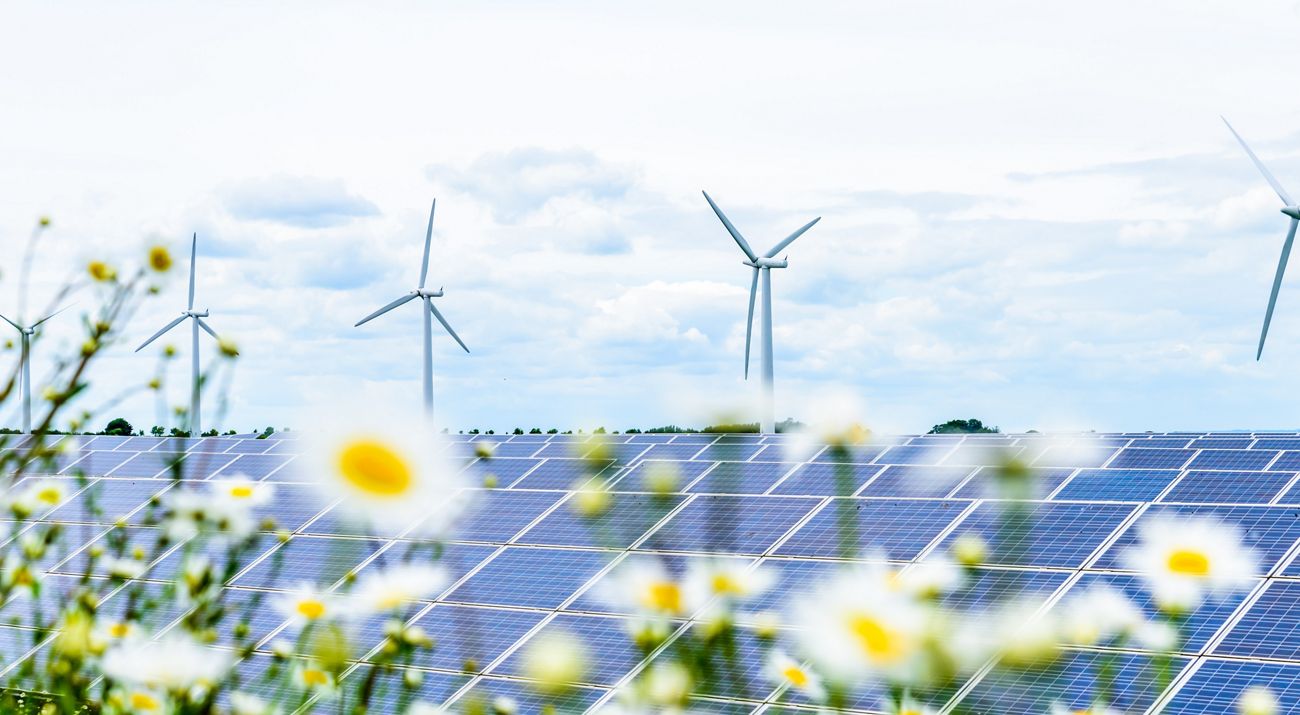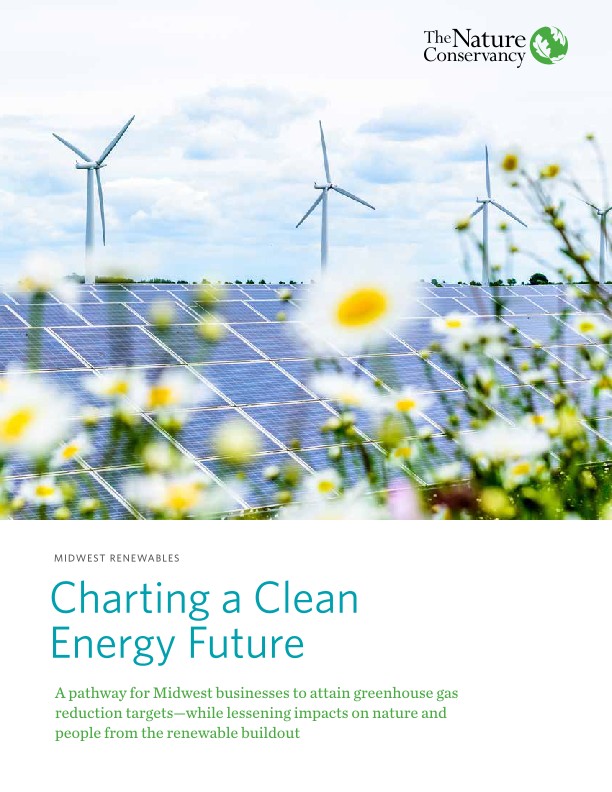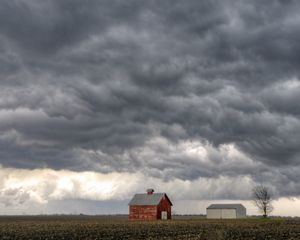Charting a Clean Energy Future
A pathway for Midwest businesses to attain greenhouse gas reduction targets—while lessening impacts on nature and people from the renewable buildout.
Get the Report
Access insights to help your company plan, procure and site wind and solar projects.
DownloadAs big energy users, businesses are positioned to play an outsized role in helping the U.S. attain net-zero emissions by 2050. In a recent report, TNC found that businesses in five Midwestern states—Illinois, Indiana, Michigan, Ohio and Wisconsin—have been rising to the challenge of reducing their carbon footprints. They are setting ambitious greenhouse gas reduction targets and working to attain those goals by signing renewable purchasing agreements with developers or building their own wind and solar projects.
Quote: Anna Dirkswager
Solar and wind electricity generation has increased across the five Midwest states in recent years, but the buildout needs to pick up speed. Businesses and utilities face challenges meeting their renewable energy commitments due to the lack of available electricity from local renewable sources. In addition, land-use concerns and some state policies are making it difficult for businesses to build their own local solar and wind projects. TNC and our partners are working to address these challenges. One way is by providing helpful tools and resources that businesses can use to plan, site, procure and build solar and wind projects that take into account socioeconomic and environmental concerns.
Key Takeaways
-
There is a high business demand for renewables.
TNC found that, on average, 54% of large businesses and employers across five Midwest states—Illinois, Indiana, Michigan, Ohio and Wisconsin—have ambitious greenhouse gas reduction targets. But they may be challenged to meet their targets without additional local renewable options.
-
The availability of clean energy varies by state.
For example, in Illinois, almost 20% of generated electricity comes from wind and solar, while only 5% of electricity generated in Ohio comes from renewables. By contrast, states such as Iowa, South Dakota and Oklahoma have capitalized on clean energy, generating more than 50% of electricity from solar and wind, as of March 2023.
-
Resources are available to help procure and site.
TNC and our partners have developed a number of downloadable tools and other resources that can help buyers successfully procure and site renewable projects while embracing the “3C” approach—which considers community, conservation and climate. EXPLORE OUR RESOURCES
Companies stand to benefit economically as well as reputationally by transitioning to clean energy. Solar and wind installations can now produce energy less expensively than coal plants, especially when sizeable tax credits available through the Inflation Reduction Act (IRA) are considered.
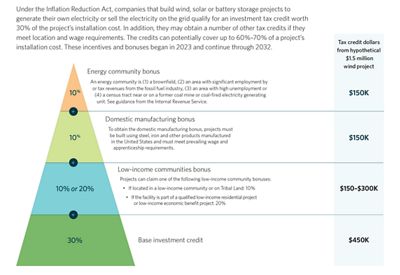
Download
TNC's new report provides insights and strategies to help procure, develop and site solar and wind projects for your organization.
DOWNLOADHow Can We Accelerate Progress in the Midwest?
Global demand is increasing for sustainably made materials and products, and the Midwest must meet this economic opportunity or face losing its competitive edge, jeopardizing the many jobs associated with this sector.
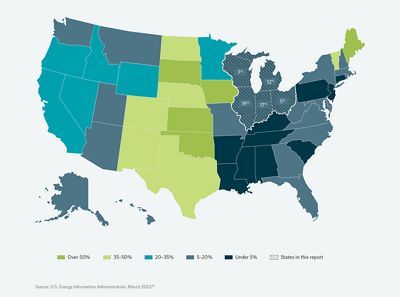
A number of barriers are slowing the installation of more renewable energy projects in the Midwest, including long approval processes for new installations, supply chain issues and interconnection issues due to an inadequate and outdated electrical grid infrastructure. In addition, TNC is working to address two challenges—state and local policies and land use concerns—that can stymie the needed growth of solar and wind installation, if projects are not approached in a thoughtful and collaborative manner.
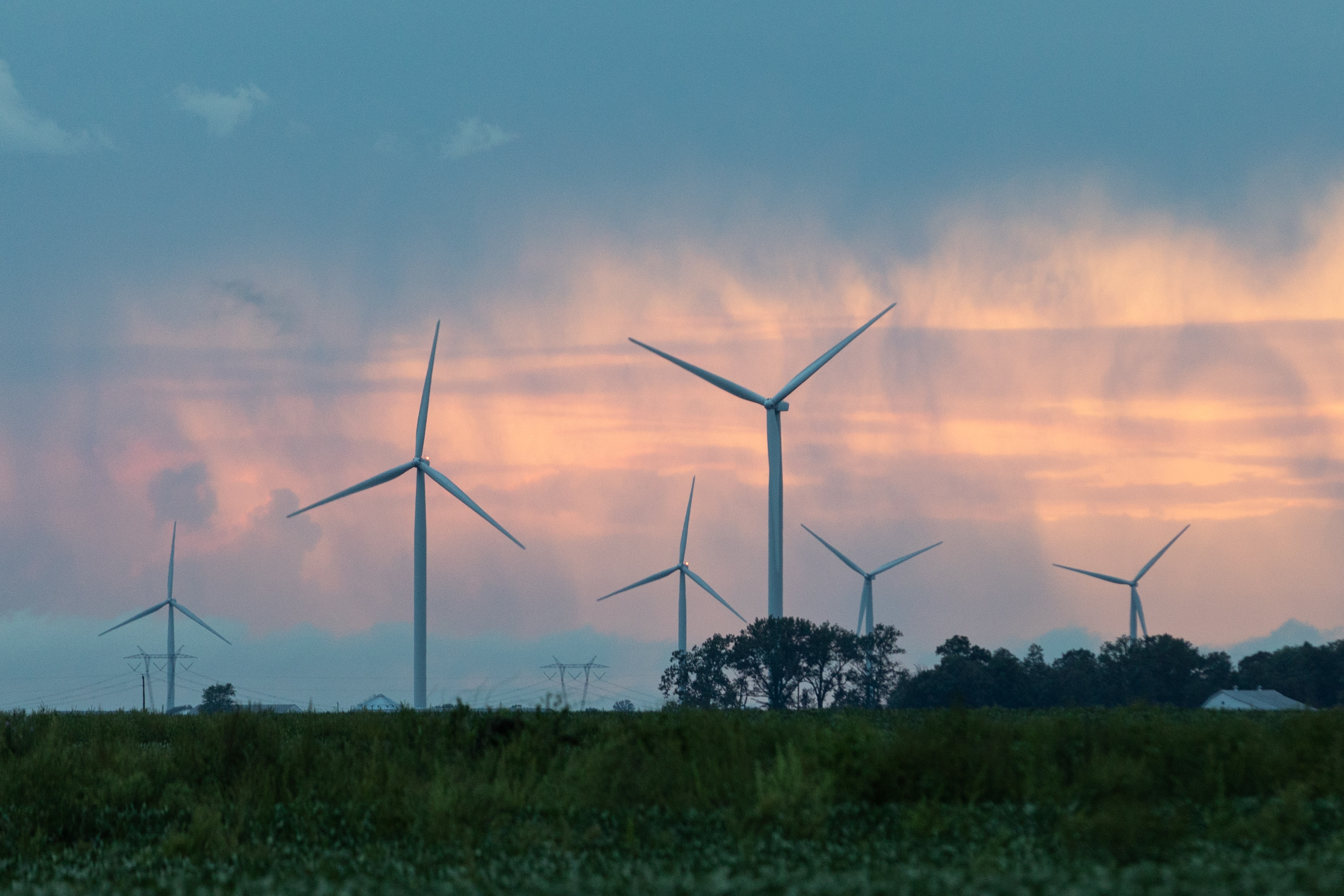
State & Local Policy
State laws and regulations vary across the Midwest in terms of incentivizing and discouraging renewable energy development. Here are three policy examples that may deter solar and wind projects:
In Ohio, the project-siting law (S.B.52) gives county or township governments the authority to veto large wind and solar developments.
In Michigan, utility-scale wind and solar projects must receive approval by local townships in Michigan.
In Indiana, companies are restricted in their ability to enter into third-party power purchase agreements, which limit a business’s ability to contract directly with wind or solar developers.
Additionally, community acceptance of the renewable buildout is inconsistent across the five Midwestern states studied and may vary considerably from township to township, further reducing the landscape of opportunity.
The most cost-effective and climate-forward scenario for businesses is to be able to obtain electricity from renewable resources near where their office buildings, factories, data centers and other properties are located—either through procurement or by building their own installations.
When states enact policies that slow down the renewable buildout, it not only makes it difficult for businesses to meet their clean energy targets and provide sustainably produced products, but it also curtails their ability to access federal tax credits, offered through the IRA, which can significantly lower the cost of building renewable projects. All of these challenges create an environment that reduces a company’s ability to maintain a competitive edge, which may jeopardize their status as a large local employer.
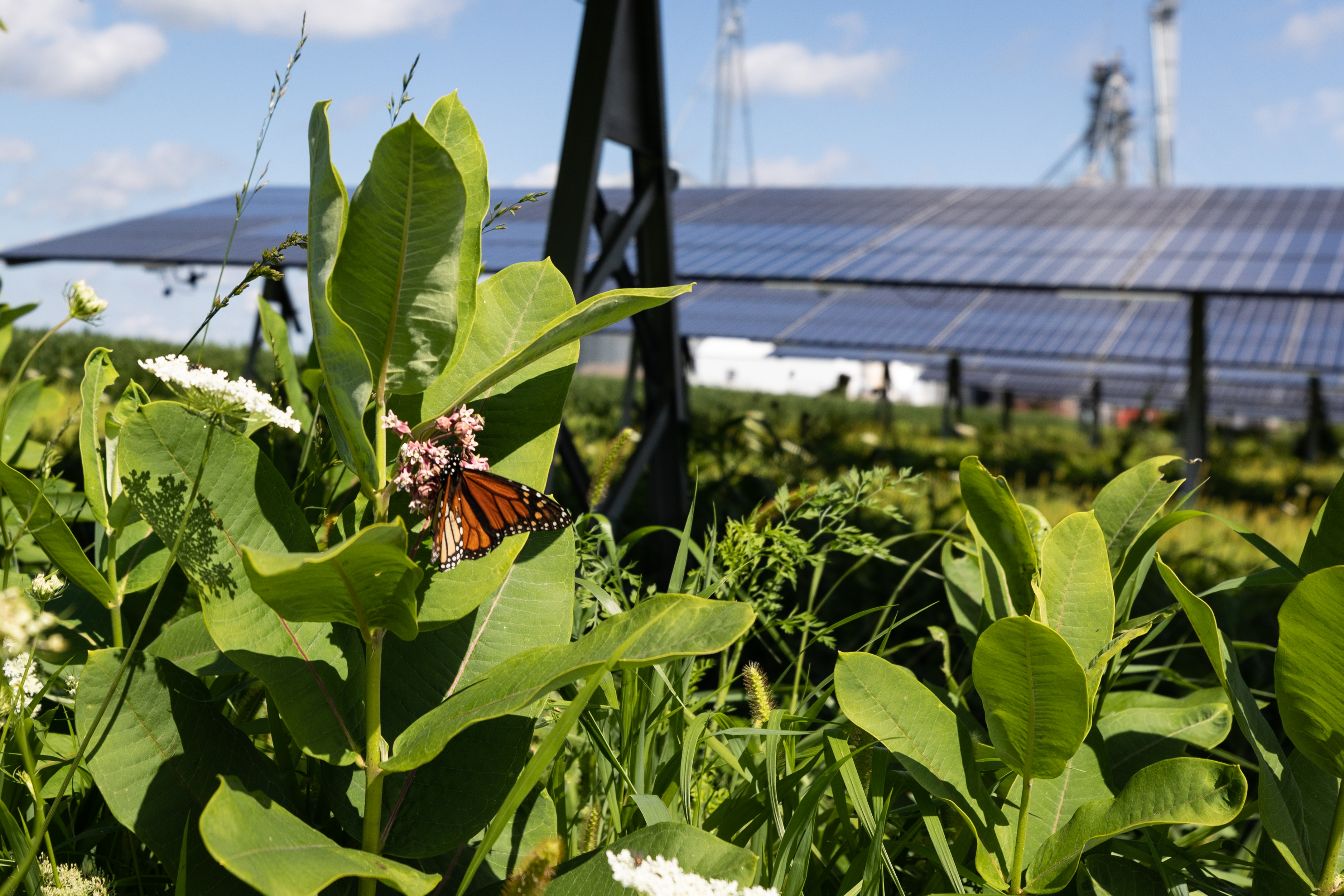
Land Use Concerns
Another critical challenge delaying some renewable projects is land usage. Estimates suggest that the U.S. will need a land area the size of Texas to build out enough wind, solar and transmission to reach net-zero emissions by 2050. Some communities are worried that these renewable installations will take over or encroach on land currently used or slated for other important purposes, such as agriculture, recreation and affordable housing. Environmentalists and nature advocates are also concerned about the loss of land critical to conserving wildlife and biodiversity.
Fortunately, as detailed in the next section, TNC research shows that the U.S. can avoid most impacts to sensitive and working lands with careful and coordinated planning and robust community engagement while still achieving net zero emissions by 2050.
A Holistic Approach to Renewable Procurement and Siting
A solution to land usage concerns and renewable projects: Embrace the “3Cs” for clean energy development, procurement and siting:
Communities: Support an equitable transition that considers the needs of various people and communities.
Conservation: Protect wildlife and habitat.
Climate: Optimize carbon impact.
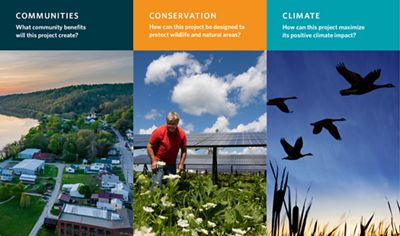
Siting renewable projects in areas that would significantly impact wildlife, habitat, people or communities can lead to conflict and slow the progression of renewable projects. These delays and increased costs can be minimized by evaluating siting considerations early in the project development process.
This approach, detailed in TNC’s Power of Place report, cuts the amount of land needed for renewable installations to reach the U.S. net zero goal in half. It also helps ensure that projects are completed in a timely manner. A study of solar projects indicates permitting was three times faster and project costs were 7% to 14% lower when projects were sited in areas of low biodiversity, compared to high biodiversity sites.
There is no one-size-fits-all approach to this challenging work. However, TNC has developed a number of resources that can help Midwest companies balance a 3C approach to procurement and siting with other priorities.
Resources for Planning, Procuring and Siting
The following TNC resources and tools are helping a growing number of businesses ensure renewable projects meet environmental and social commitments as well as financial goals—while meeting the 3Cs.
-
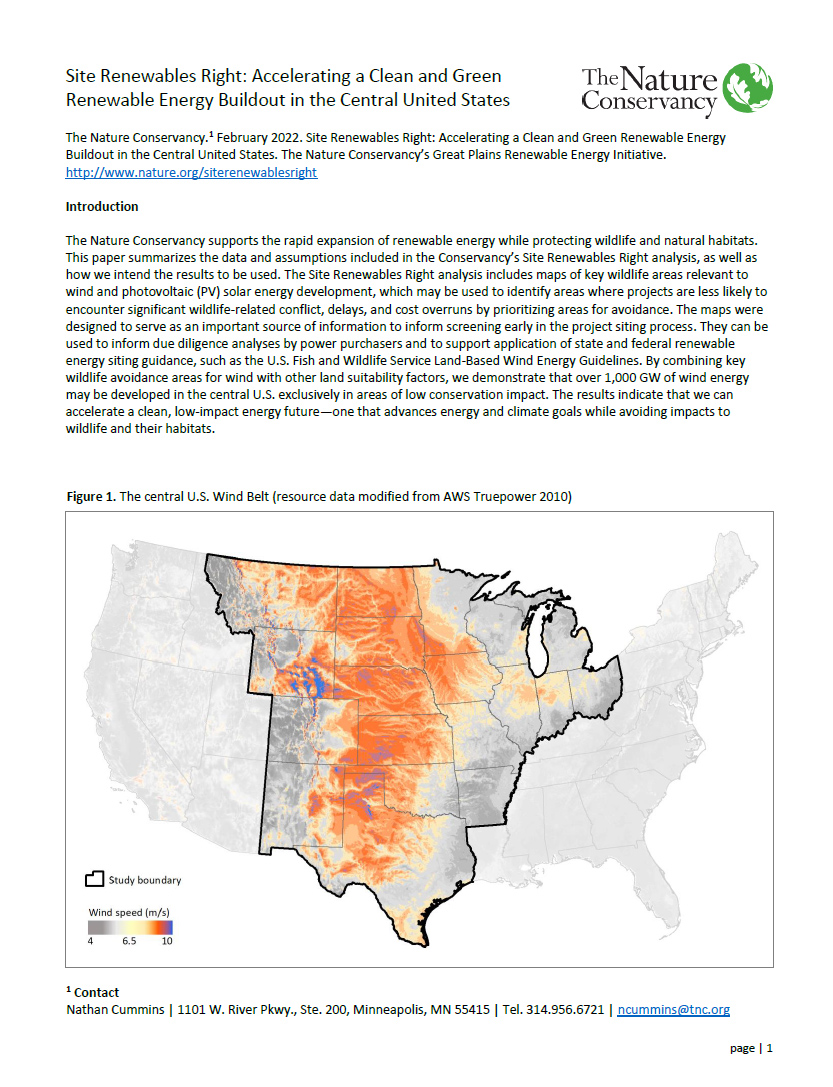
Site Renewables Right
Interactive Map
TNC’s Site Renewables Right maps identify where wind and solar energy can be developed in the central United States while conserving important wildlife habitats and natural areas at the same time. EXPLORE THE MAP
DOWNLOAD -
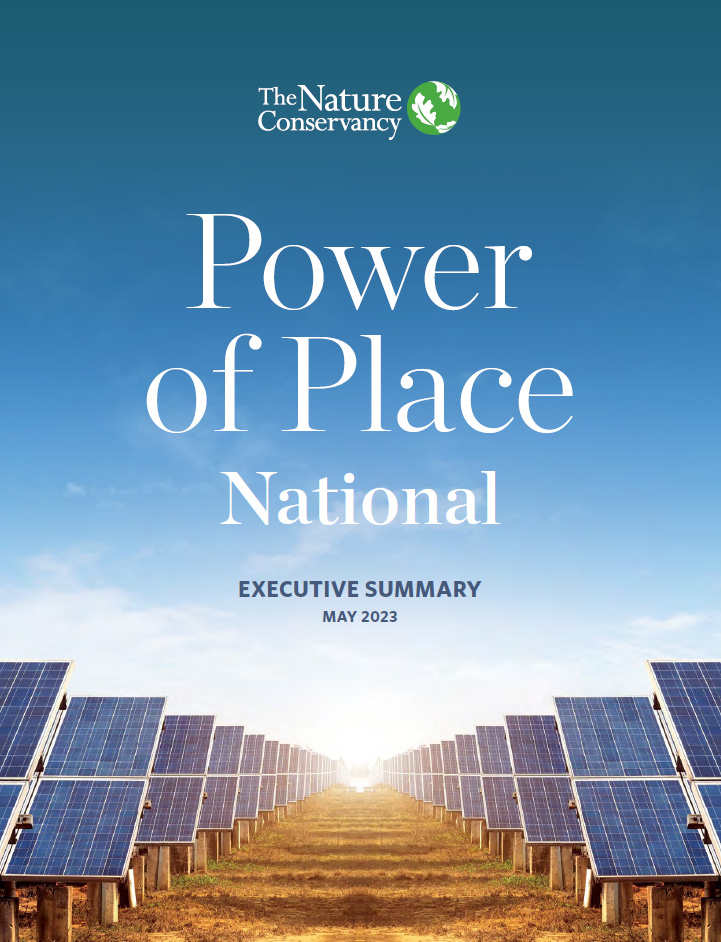
Power of Place: Clean Energy Solutions for People
National Report
This report can help energy planners & policymakers execute net-zero strategies that benefit climate, nature & people. It shows that with careful & coordinated planning & robust community engagement, the U.S. can build clean energy infrastructure needed for economy-wide, net-zero emissions by 2050.
DOWNLOAD
Questions?
Interested in diving in deeper in the renewable energy space? Get in touch with renewables expert Anna Dirkswager, the director of climate and energy for TNC's Midwest Division.
